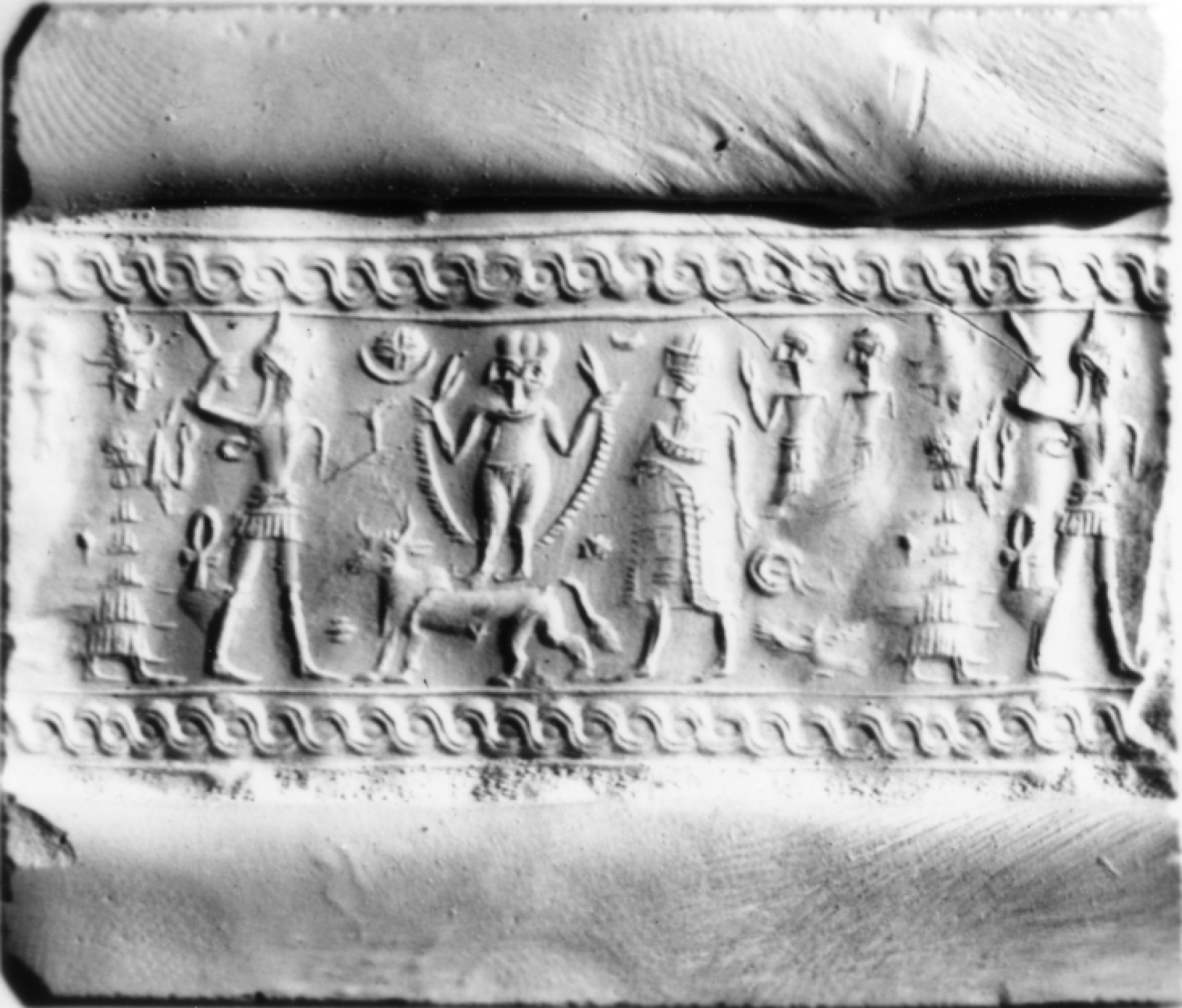Cylinder Seal with Deities and Worshippers
(Ancient Near East )
Syrian seals have a diverse range of imagery drawn from Syria, Egypt, Mesopotamia, and Anatolia. This seal depicts the Syrian "smiting" god and a nude female goddess, probably Ishtar, standing on the back of a bull. In this period, nude goddesses were generally associated with Astarte, Anath, and other West Semitic and Canaanite deities. Next to the smiting god is a Babylonian goddess wearing an Egyptian-style Atef crown. A third crowned figure stands on the opposite side of Ishtar. In an auxiliary scene, two smaller figures stand above a twisted knot and a bird. The elaborate borders and the detailed figures are typical of Syrian seals of this period. An Egyptian ankh and a Mesopotamian sun disk in a crescent illustrate further connections between Syria and its neighbors.
Cylinder seals are cylindrical objects carved in reverse (intaglio) in order to leave raised impressions when rolled into clay. Seals were generally used to mark ownership, and they could act as official identifiers, like a signature, for individuals and institutions. A seal’s owner rolled impressions in wet clay to secure property such as baskets, letters, jars, and even rooms and buildings. This clay sealing prevented tampering because it had to be broken in order to access a safeguarded item. Cylinder seals were often made of durable material, usually stone, and most were drilled lengthwise so they could be strung and worn. A seal’s material and the images inscribed on the seal itself could be protective. The artistry and design might be appreciated and considered decorative as well. Cylinder seals were produced in the Near East beginning in the fourth millennium BCE and date to every period through the end of the first millennium BCE.
Provenance
Provenance (from the French provenir, 'to come from/forth') is the chronology of the ownership, custody, or location of a historical object. Learn more about provenance at the Walters.
Henry Walters, Baltimore, [date of acquisition unknown], by purchase; Walters Art Museum, 1931, by bequest.
Conservation
| Date | Description | Narrative |
|---|---|---|
| 6/4/1968 | Treatment | other |
Geographies
Syria (Place of Origin)
Measurements
H: 1 3/16 x Diam: 1/2 in. (3 x 1.3 cm)
Credit Line
Acquired by Henry Walters
Location in Museum
Accession Number
In libraries, galleries, museums, and archives, an accession number is a unique identifier assigned to each object in the collection.
In libraries, galleries, museums, and archives, an accession number is a unique identifier assigned to each object in the collection.
42.450


